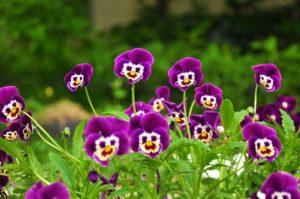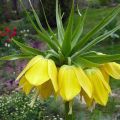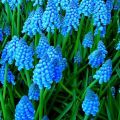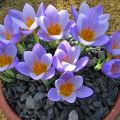When and how to plant hyacinths in open ground, rules of care and cultivation
Hyacinths are early spring flowers, planting and caring for them outdoors requires adherence to certain rules. This bulbous culture is planted annually in the fall, before the onset of cold weather. Hyacinths bloom in April. In summer, the bulbs are removed from the ground and dried in a hot and dry room. In the fall, they are again buried in the ground, and this is repeated every season.
Content
- 1 Features and characteristics of the bulbous flower
- 2 Popular varieties of hyacinth
- 3 What conditions are necessary for the growth and flowering of culture
- 4 The subtleties of planting a plant in open ground
- 5 Flower care
- 6 Diseases and pests: control and prevention
- 7 How to care for hyacinth after flowering
- 8 Hyacinth breeding methods
Features and characteristics of the bulbous flower
Hyacinth is a bulbous perennial crop from the Asparagus family. The most famous types are Litvinov, Transcaspian and Eastern. They grow in Mediterranean countries and in southern latitudes. Oriental hyacinth has been cultivated since the 15th century. More than a thousand different varieties have evolved from this species. Holland is considered the world center for the cultivation of bulbous plants. This country has ideal conditions for the development of hyacinth bulbs.
The hyacinth has an erect, thick stem, up to 14-35 centimeters high, and has long, narrow, pointed leaves at the tip. At the top of the shoot, bell-shaped flowers (up to 36 pieces) are collected in a carpal inflorescence. The inflorescence of hyacinth is snow-white, blue, yellow, crimson, blue, purple. Flowers can be double or simple. Leaves and stem emerge from the bulb. The bulb is perennial, dense, consists of fleshy grassy leaves.
Hyacinth blooms in early spring (about two weeks). Pollinated by insects. Instead of a flower, a fruit is formed with seeds inside. After flowering, the stem with leaves dries up, and a bud appears inside the old bulb, blooming in spring. In addition to the inner bud, tiny children appear near the bottom of the bulb and in the axils of the bulbous scales. Grown up children can be separated and raised separately. True, they will bloom only after 3-4 years.
After flowering, the bulbs are dug up. Before autumn, they must be thoroughly dried in a hot room. In October, the bulbs are buried again. One and the same bulb can throw out a new peduncle in the spring for 10 years. True, it is recommended to constantly change the landing site.

Popular varieties of hyacinth
There is a huge variety of hyacinths. They differ, as a rule, in the color of the inflorescences and the shape of the flowers. All plants reproduce by bulbs.
When buying, it is recommended to look at the size of the bulbs. Adult bulbs can be 4-6 centimeters in diameter. They are even smaller in terry and yellow garden varieties.
Lilac and purple
In their natural form, the inflorescences of hyacinths have a lilac color with a purple tint and small bell-shaped simple flowers. Thanks to the efforts of botanists, new varieties of these plants have appeared. For example, Manhattan - with dark purple double flowers; Menelik - in the inflorescence there can be up to 35 dark lilac flowers with a light border; Royal Novi - on one brush - up to 45 large double purple flowers.
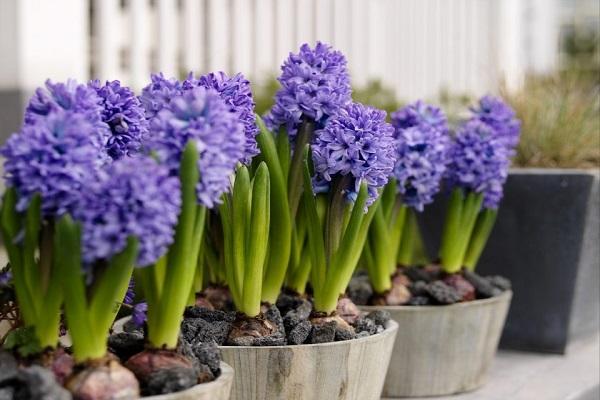
Blue
The Peter Stevenson variety is the bluest hyacinth with a height of 25 centimeters. It has numerous, double, large, bell-shaped flowers.
General Kohler is a hyacinth with pale blue double flowers. In the middle of each petal there is a dark stripe, which, as it blooms, gradually fades. Flowers - large (up to 4.1 centimeters in diameter), with a sweetish aroma.
Pink
Anna Marie - up to 26 centimeters high. It has a loose inflorescence, consisting of numerous pink star-shaped flowers.
Pink Pearl - the inflorescence is densely covered with pink, with a dark line on the petals, star-shaped flowers. This early flowering variety has the appearance of a lush cone.
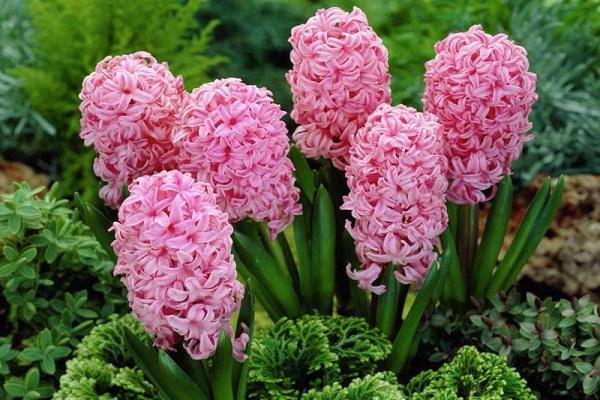
Yellow and orange
City of Haarlem is a straw-colored variety with large flowers. The height of the culture is up to 32 centimeters.
Orange Bowen is an apricot hyacinth with drooping flowers on long pedicels. The height of the culture is up to 20 centimeters.
Red
Jan Bose - cylindrical, lush raspberry-colored inflorescence. Flowers are small (up to 3 centimeters) with a light center.
La Victoire is a lush hyacinth with a rich crimson inflorescence. One brush contains up to 55 flowers with a diameter of up to 2.9 centimeters.

What conditions are necessary for the growth and flowering of culture
Before planting an onion, you need to find a suitable place for it. In the country, flowers are usually planted near the hedge, near the house or in the middle of the lawn - on a flower bed. The main thing is to place hyacinths away from shrubs and trees so that they do not shade the culture and do not take nutrients from the flowers. For growing hyacinths, certain conditions must be created.
Illumination of the landing site
The crop prefers to grow in the sun or in a well-lit garden area. It is advisable to place the flower bed in a place protected from the winds. Hyacinths can be planted on a hill or knoll so that when the snow or rain melts, water does not accumulate near the bulb, but flows down.
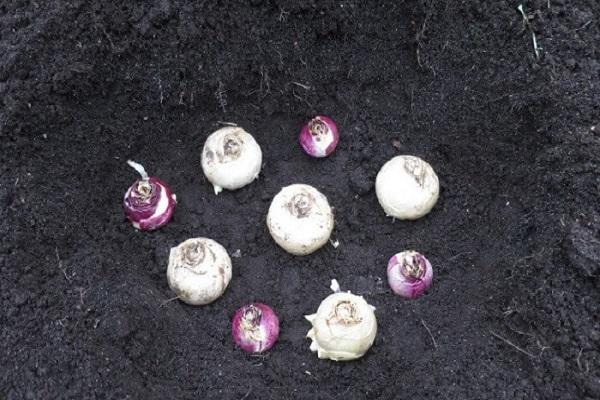
Temperature regime
Bulbs "hatch" at a temperature of 5-10 degrees Celsius. Bloom in April-May, when the air warms up to 15-20 degrees. By the end of June, the hyacinth inflorescences have time to bloom, and their leaves turn yellow. In July, the shoots are cut off, and the bulbs are dug up. After digging up, the natural process of forming a new inflorescence begins. To do this, the bulbs need to provide a heat of 25 degrees. It is desirable to maintain this temperature for 2 months. 1-2 weeks before planting, the bulbs can be transferred to the street.
In October, the bulbs are buried in the ground, there they will be there all winter (at subzero temperatures). In the spring, after the snow melts, hyacinths will sprout and bloom.
Humidity
The culture prefers moderately moist soils. In very swampy soil, the bulbs begin to rot. Groundwater can occur at a distance of at least 55 centimeters from the surface. Reduce soil moisture with drainage or high embankments.
Soil composition
The culture prefers loam or sandy loam soils of neutral acidity. Too clayey soil can be diluted with peat or sand. The soil should be permeable and moderately fertilized. It is undesirable to use too fresh manure.You can fertilize the soil with rotted humus 2 months before planting. Hyacinths don't like sour soil. To normalize acidity, a little lime or ash is added to the soil. The optimal composition of the soil: garden (sod or leaf) soil, compost, peat, sand.
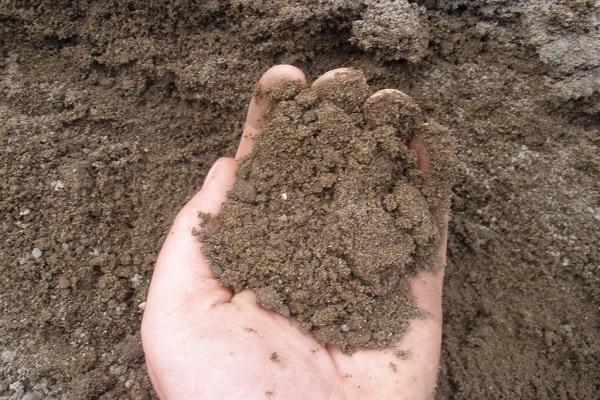
The subtleties of planting a plant in open ground
After flowering, hyacinths are kept in a flower bed until July, then the bulbs are dug up and dried for 2-3 months, and in October they are again planted in pits. You can plant plants in a flower bed in spring.
Timing
Bulbs are planted at the end of September or at the very beginning of October. If you plant hyacinths a little earlier, they will begin to grow in the warmth, and then die in the frost. When the bulbs are planted in November, they do not have time to root until the soil freezes.
Spring
In spring, hyacinth bulbs are planted only if, for some reason, it was not possible to plant them in the fall. They are pre-dried at a temperature of 25 degrees Celsius for two months, then they are kept in the refrigerator on a vegetable shelf for a whole week. When the snow melts and the soil warms up to 5-8 degrees Celsius, hyacinth bulbs are planted in a flower bed. Planting is carried out in April. Pre-dug up and fertilize the soil. Before planting, hyacinth bulbs must be irrigated with a fungicide to protect them from fungi.
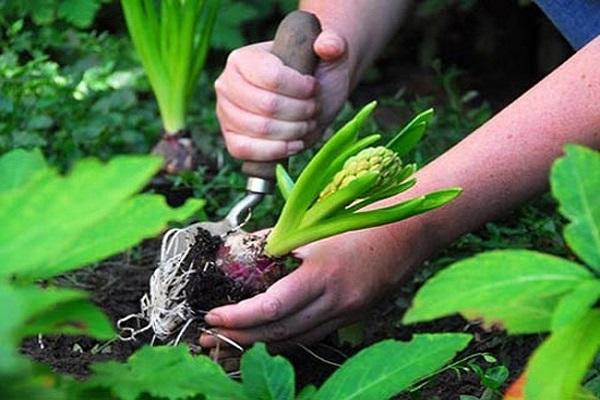
Autumn
The bulbs are planted at the end of September or in October, that is, long before the onset of frost. It is recommended to plant hyacinths before November. Before frost, plantings are insulated. Peat and humus, dry leaves, sawdust or spruce branches are taken as mulch. In spring, as soon as the snow melts, the mulch is removed, because the sprouts of hyacinths "hatch" early.
Bulb planting technology and depth
The flowerbed is prepared in August. They dig up the earth, bring in a little humus (half a bucket per one square meter). Too clay soil is diluted with peat and sand, enriched with phosphorus, potassium and magnesium. Nitrogen supplements are applied in the spring during feeding.
Hyacinths are planted in holes to a depth of 16-20 centimeters. There should be a distance of 16-25 centimeters to the neighboring flower. Small children bury it shallowly. Before planting, it is recommended to pour some river sand on the bottom of the hole. The bulb is immersed in the hole and pressed slightly. Sprinkle sand on top again, and only then cover the hole with earth. This method will save the bulb from infections and decay. After planting, the soil is irrigated with water, and a peg is inserted next to it for a guide.

Flower care
After planting, the crop must be properly cared for. The main thing is not to allow the soil to dry out too much and top dressing on time.
Watering
If it rarely rains, and the ground in the flowerbed is very dry, you can water the hyacinths. 7-10 liters of water are consumed per square meter of land. Flowers are watered once every 3-4 days. It is recommended to loosen moistened soil. After flowering, watering is continued for another 2 weeks, then it is stopped and the plant is allowed to dry out.
Top dressing
Hyacinths are fed twice. The first time the plants are fertilized in early spring, as soon as the first shoots appear. Ammonium nitrate is added to the ground. The second top dressing is done before flowering. The soil is fertilized with superphosphate and potassium sulfate. Take one tablespoon of fertilizer per square meter. Top dressing is scattered over the surface, lightly sprinkled with earth and irrigated with water.

Transfer
Hyacinths are often bought in spring at the time of flowering. The flowering plant is usually left untouched. True, if the hyacinth is left in a cramped pot, then its bulb will not accumulate nutrients. It is advisable to transplant the flower to the flower bed. Before transplanting, the soil in the pot is moistened, and the plant, along with an earthen clod, is moved into the dug hole.
You need to transplant hyacinth very carefully so as not to damage the roots.The procedure is best performed in May, when the air warms up to 15 degrees. In July, the dried stem must be cut off, and the onion must be dug up and dried.
Diseases and pests: control and prevention
If hyacinths are improperly taken care of - do not weed, do not fertilize, or plant flowers on too clayey or acidic soil, they can get sick. Most often, this bulbous culture is subject to fungal infections. The disease can be provoked by rainy weather and too humid habitat.
Hyacinths will not get sick if they grow on fertile and moderately moist soil. Before planting, onions, as a preventive measure, must be treated with a solution of potassium permanganate, fungicide or a preparation containing phosphorus. The bulbs can get sick with bacterial rot. Treatment of the soil before planting with 5% formalin or bleach saves from this infection.
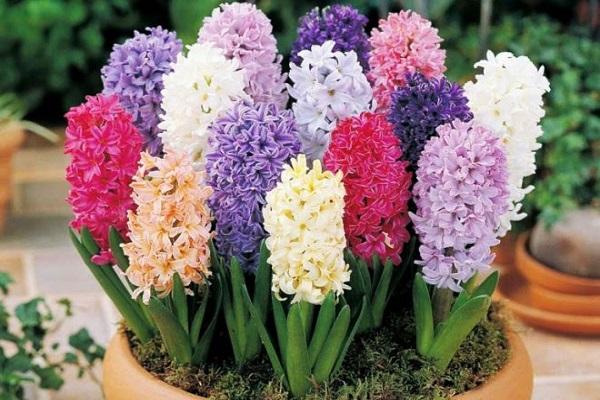
Sometimes hyacinths drop inflorescences. This is not a disease, but a physiological feature caused by strong root pressure. A similar phenomenon may be the result of improper care. The loss of inflorescences provokes an excess of moisture in the soil, early planting of bulbs, drying of planting material at insufficiently high temperatures.
Hyacinths are often attacked by insects. Suffer from aphids, bears, flower flies, thrips, onion mites. Spraying with insecticides (Aktara, Medvetoks, Fitoverm) is saved from pests.
How to care for hyacinth after flowering
Some gardeners practice removing flowers from a peduncle while still in the stage of colored buds. The green arrow is retained, and it continues to function as an additional sheet. This technique helps to increase the mass of the young bulb, it accumulates more nutrients for the formation of a peduncle for the next season. Adult plants are allowed to bloom naturally.
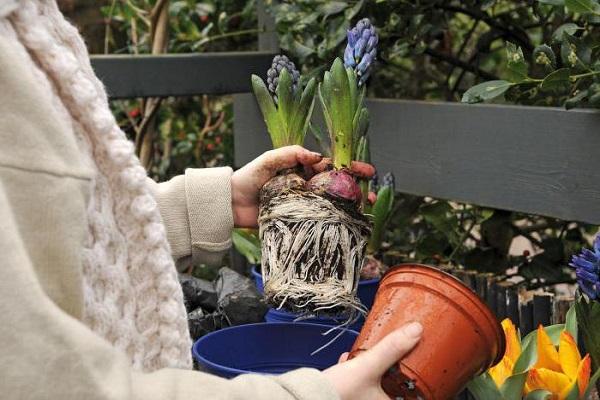
Pruning
Hyacinths are pruned after flowering, when the stem and leaves turn yellow and dry. Then the bulbs are dug out of the ground. If they are not dug up and dried, hyacinths will bloom much worse next spring. Bulbs are removed from the ground in early July. Then they are cleaned, washed, carefully examined, and sore spots are treated. The bulbs are dried, the grown children are separated, sprayed with a fungicide. Store in a warm room at a temperature of 22-25 degrees Celsius until autumn. In October, they are taken out into the street for 1-2 weeks, and then buried in the ground.
We take care in winter
The bulbs planted in autumn are covered with a thick layer of mulch before wintering. The surface is mulched with dry leaves, sawdust, peat with humus, spruce branches. The thickness of the mulch should be 20 centimeters. In winter, snow is constantly poured onto the flower bed where the bulbs are planted.
Hyacinth breeding methods
Hyacinths can be propagated with bulbs, children. The seed method is used only by breeders. Flowers obtained from seeds do not repeat the varietal characteristics of their parents. Such plants bloom only after 5-7 years.

In practice, hyacinths are propagated by children. An adult bulb forms from 1 to 5 babies every year. For a while, they are not separated from the mother's bulb. When the kids grow up a little, they are broken off and grown separately for another three years.
Cutting out the bottom is another breeding method. The onion is dug in the summer, dried, and then the bottom is cut out with a teaspoon. On the cuts, after 2 months, new bulbs appear (up to 22-40 pieces). They will bloom only after 3-4 years..
The bulbs can be propagated by cutting the bottom. For this, a cruciform incision is made at the very bottom. After 2 months, up to 15 children will appear. Before they bloom, they are grown for two whole years.
